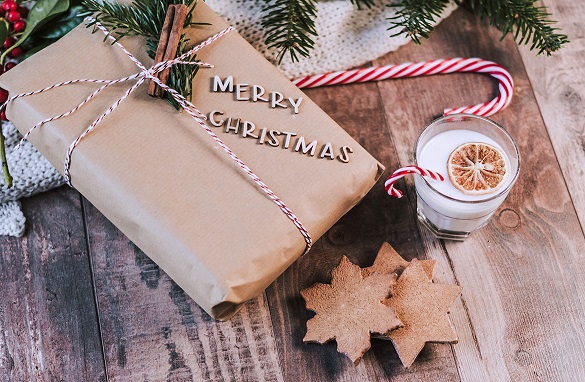
This Christmas, Let Us Have a Plastic-Free Celebrations
When someone asks what winter or Christmas means to you, say nothing. Let a slow smile drift to your lips, but do not answer. Instead, remember Christmas Day. Think back on the memories, sights, sounds, laughter, and smells filling the nostrils. Imagine the absolute joy of family and fun, the delight of celebrating this special day with your loved ones. The pleasure of seeing the Christmas tree flashing and flickering with dazzling lights is a sight to recall.
Nowadays, while celebrating Christmas, we order loads of food and gifts for our near and dear ones. These usually come in neat glitzy plastic packaging, which we often discard. Plastic packaging frequently ends up in landfill sites than being recycled back. In other words, festivities act as catalysts, accelerating the pace of plastic consumption.

Plastic is omnipresent
Growth is at the heart of every economy. The sad part is that countries all over the world have prioritized economic prosperity and competency over environmental conservation and safety.
Plastic is one of the most hazardous wastes that is abundantly produced. The consumer market has evolved since the revolutionary invention of plastic in the 1950s. Plastics have engulfed our very existence because they are inexpensive, durable, and lightweight. As a result, it became an essential component in business operations such as storage, transportation, packaging, and construction.
Economical and convenient products have taken over the market in the age of consumerism, and because plastic is cheap and long-lasting, single-use plastics have become very common. As a result, disposable plastics are widely used for packaging. These include, among other things, grocery bags, food packaging, bottles, straws, containers, cups, and cutlery.

Does plastic dampen the spirit of Christmas season?
The primary source of human exposure to plastic contaminants is the transfer of chemicals from food packaging into food and drinks. Some plastic polymers used in food packaging degrade when exposed to acidic or alkaline foods or heat. Toxic molecules such as styrene are released under these conditions. Microplastics and the chemicals associated with them in plastic consumer products and packaging have an impact on human health.
Sustainable packaging by Evirocor
Biodegradable packaging products address the alarming problem of plastic waste piling up on land and in landfills, resulting in less plastic production and the conservation of hydrocarbons and other types of resources. Oko sustainable food packaging products from Evirocor are made from earth-friendly, plant-based, home-compostable, and organic raw material, resulting in a lower carbon footprint and eliminating the need to landfill. In addition, since the material is biodegradable, it has no negative impact on human health.
Conclusion
We have reached a point where our actions have cost us severely, and investment in environmental protection is essential. As a first step towards this, we must demand mandatory label information on every packaging material and plastic container. We must know whether they are recyclable, and those that cannot be recycled should be discouraged. The same guidelines should apply to food platforms as well. They must use recyclable packaging and take responsibility for recycling them or use biodegradable packing materials.
Don’t you want to give your family a joyful and hopeful Christmas? Show them you care for them and the planet by promising you will decrease your carbon footprint next year and try to preserve the environment. Let us start this Christmas & New Year by ordering food in non-plastic packaging.
